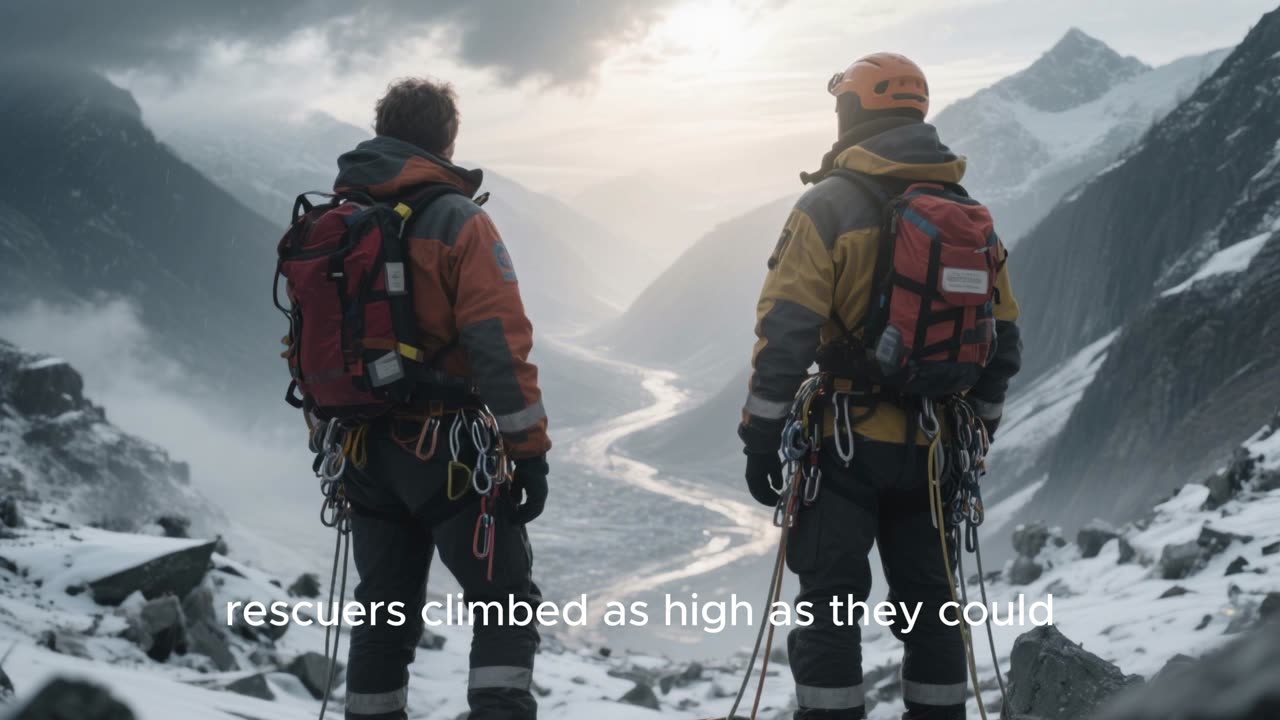Premium Only Content

The 1996 Mount Everest Disaster
The mountain has always been there, ancient and indifferent, a frozen cathedral rising five and a half miles into the sky. Mount Everest — the highest point on Earth, where the air is so thin that every breath burns, and where the line between glory and death is drawn in ice. For centuries, it was untouchable, a realm of gods and wind, but in the modern age, it became something else — a challenge, a dream, a place where men and women went not only to conquer nature but to test the limits of their own souls. And in May 1996, that dream turned into a nightmare that would become one of the deadliest disasters in mountaineering history.
The season began with clear skies and cautious optimism. Dozens of climbers from around the world had gathered at the base of Everest — professionals, adventurers, and dreamers who had paid small fortunes to stand on the roof of the world. Two main commercial expeditions led the way: one by Rob Hall, a respected New Zealander known for his discipline and care, and the other by Scott Fischer, an American climber famous for his daring spirit and easy smile. Both men had led countless climbs before, and both believed that with enough skill and teamwork, Everest could be managed — even tamed.
For weeks, the teams climbed slowly, adjusting to the altitude, setting ropes and camps up the mountain’s deadly face. They moved through the icefall, across crevasses so deep they seemed bottomless, and up the slopes of the Lhotse Face, where the air felt like glass in their lungs. The mountain was stunning — blue ice and endless sky — but it was also deceptive. Every step upward took them closer to the place climbers call the Death Zone, where the oxygen is so scarce that the human body begins to die.
By May 10th, both expeditions were ready for their final ascent. The weather looked stable, and at midnight they began their climb toward the summit. Headlamps flickered like stars against the black slope. The air temperature was forty degrees below zero. At that altitude, even the smallest mistake could mean death. But driven by years of training and a lifetime of dreams, they climbed higher.
As the sun rose, the summit appeared — a jagged peak glowing gold in the light of dawn. One by one, climbers reached the top of the world. They took photographs, hugged, cried, whispered to the sky. It should have been the moment of triumph. But behind the beauty, danger was already building. The teams had started too late. The winds were changing. And as clouds gathered below, their path home was slipping away.
Descending is always harder than climbing. Exhausted and disoriented, the climbers began their way down just as a storm rolled in — one of the worst blizzards Everest had ever seen. The wind howled with hurricane force. Temperatures plummeted. Visibility dropped to nothing. The thin line of rope they followed vanished into darkness. Radios failed. Batteries froze. The mountain, silent for so long, roared to life, swallowing sound and hope.
Rob Hall, guiding one of his clients, Doug Hansen, was still high above the Death Zone when the storm struck. Doug had pushed himself beyond exhaustion, desperate to reach the summit, and now he could barely move. Rob refused to leave him. As night fell, they were trapped at nearly 29,000 feet, without shelter, without oxygen, and without a chance of rescue. Over the radio, Rob’s voice was faint, barely a whisper: “We’re cold, but we’re okay. We’ll just sit tight for the night.” But the night on Everest is endless.
Meanwhile, lower on the mountain, Scott Fischer was also in trouble. Strong, fearless, but exhausted from lack of sleep and oxygen, he collapsed near the South Summit. His Sherpa guide stayed with him, trying to keep him alive, but by dawn, Fischer was gone — another life claimed by the mountain he loved so deeply.
At Camp Four, the survivors huddled in tents, praying for the missing. A small group of climbers had become lost in the storm, wandering blindly on the South Col, unsure which direction led to safety. The wind tore at their faces, freezing their skin in minutes. Yet somehow, by pure chance, a few stumbled back to camp, half-dead but alive. Others never returned.
As the storm cleared the next morning, rescuers climbed as high as they could, but it was too late for most. The mountain was littered with torn tents, broken gear, and the silent shapes of those who had dared too much. Rob Hall was still alive, clinging to life on the ridge. Over the radio, he made one last call to his wife in New Zealand. His voice was calm, loving, and clear. He told her not to worry, that he was comfortable, and that she should sleep well. It was his final goodbye.
When rescuers finally reached the upper slopes days later, they found the summit trail frozen in eerie stillness. The bodies of Hall, Fischer, and several others were left where they fell, forever part of the mountain they had sought to conquer. In total, eight climbers died in that storm — one of the deadliest single days in Everest’s history.
The disaster changed the mountain forever. It forced climbers to confront not just the physical dangers of Everest, but the hubris that often draws people there. Journalists and filmmakers later told the story, turning it into books, documentaries, and debates about ambition and responsibility. But for those who were there, it was simpler than that. It was a reminder that nature doesn’t care about dreams, that no amount of money or skill can make a person stronger than the mountain, and that sometimes survival depends not on strength, but on humility.
Yet, even in the face of tragedy, there were moments of light — climbers who risked their own lives to save others, Sherpas who carried the wounded through storms, strangers who shared oxygen when theirs was running out. In the coldest place on Earth, humanity still burned bright.
Mount Everest remains what it has always been — beautiful, merciless, eternal. Every year, new climbers arrive, chasing the same impossible dream. They walk past the markers of those who never returned, knowing that the mountain remembers every name. But still they climb, because something in the human heart refuses to be silent in the face of greatness.
And so the story of 1996 endures — not as a tale of failure, but as a testament to courage, sacrifice, and the fragile thread of life stretched thin against the edge of the sky.
-
 LIVE
LIVE
StoneMountain64
1 hour agoBattlefield REDSEC $100k TOURNAMENT
89 watching -
 UPCOMING
UPCOMING
Daniel Davis Deep Dive
5 hours agoRussia's Doomsday Weapon /MIT Prof. Ted Postol
93 -
 2:12:10
2:12:10
Steven Crowder
4 hours ago🔴Is This Really MAGA: What the Hell Is Donald Trump Doing?
347K384 -
 1:03:36
1:03:36
The Rubin Report
2 hours agoCNN Panel Looks Angry as Republican Points Out How Dems Shutdown Backfired
29.4K34 -
 LIVE
LIVE
Sean Unpaved
2 hours agoBen Johnson Has Caleb Williams Playing Best Football Of His Career! | UNPAVED
81 watching -
 3:11:24
3:11:24
Right Side Broadcasting Network
5 hours agoLIVE REPLAY: President Trump’s Veterans Day Wreath Laying Ceremony and Address - 11/11/25
58.9K18 -
 18:09
18:09
Professor Nez
2 hours ago🚨🔥HOLY MACKEREL! Chuck Schumer FLEES the Senate Floor when CONFRONTED on Obamacare FRAUD!
23.5K22 -
 1:07:04
1:07:04
The White House
3 hours agoPresident Trump and Vice President JD Vance Deliver Remarks
24.9K21 -
 DVR
DVR
The Shannon Joy Show
3 hours agoTrump & The Terrorist * MAHA Dead In DC? * Winter Weather Warfare: Live Exclusive W/ Dane Wigington
18.5K6 -
 35:12
35:12
Grant Stinchfield
2 hours ago $0.42 earnedHow Faith, Forgiveness, and Grit Keep the Oldest Among Us Alive and Thriving
12.3K1